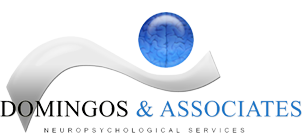What is an IEP?
An IEP is more than just a written legal document (or “plan”). It’s a map that lays out the program of special education instruction, supports and services kids need to make progress and succeed in school.
Each program is designed to meet a child’s exact needs. The term IEP is also used to refer to the written plan that spells out the specific types of help the child will get. Both the program and the plan are covered by special education law, or the Individuals with Disabilities Education Act (IDEA).
Each program is designed to meet a child’s exact needs. The term IEP is also used to refer to the written plan that spells out the specific types of help the child will get. Both the program and the plan are covered by special education law, or the Individuals with Disabilities Education Act (IDEA).
To learn more about What is an IEP, please click here to see a video from Understood.org.
What is a 504 Plan?
504 plans are formal plans that schools develop to give kids with disabilities the supports they need. These plans prevent discrimination and protect the rights of kids with disabilities in school. They’re covered under Section 504 of the Rehabilitation Act, which is a civil rights law.
These plans aren’t part of special education, so they don’t provide individualized instruction, like IEPs do. But a central purpose of 504 plans is to give kids with disabilities access to the same education their classmates are getting. (Learn more about the difference between IEPs and 504 plans.)
One way 504 plans do that is through accommodations, like extended time on tests or the ability to leave the classroom for short breaks. Some students may also get related services through a 504 plan, like speech-language therapy or study skills classes.
Schools typically create written 504 plans, but they’re not required to. There are no set rules for what a 504 plan should look like, or what it should include. The only things schools have to put in writing are their policies on 504 plans.
These plans aren’t part of special education, so they don’t provide individualized instruction, like IEPs do. But a central purpose of 504 plans is to give kids with disabilities access to the same education their classmates are getting. (Learn more about the difference between IEPs and 504 plans.)
One way 504 plans do that is through accommodations, like extended time on tests or the ability to leave the classroom for short breaks. Some students may also get related services through a 504 plan, like speech-language therapy or study skills classes.
Schools typically create written 504 plans, but they’re not required to. There are no set rules for what a 504 plan should look like, or what it should include. The only things schools have to put in writing are their policies on 504 plans.
